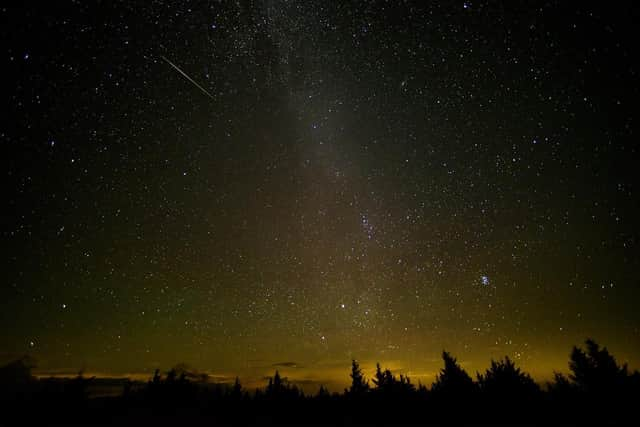Where and how to view the Draconid Meteor Shower in Chesterfield this weekend
and live on Freeview channel 276
From October 6th to around October 11th, the annual Draconid Meteor shower will be clearly visible in the night sky. So much so that you won’t need a telescope or binoculars – it’s set to be perfectly clear and easy to see with just the naked eye in the Northern Hemisphere.
Of course, there’s not harm in bringing out a telescope, but it won’t be necessary.
Advertisement
Hide AdAdvertisement
Hide AdThe Draconid Meteor Shower’s visibility is expected to be at highest around 3am to 4am on the morning of October 9th, so make sure you’re in bed early if you plan to make a trip out to see it.


It’s worth mentioning that this particular meteor shower is known for coming in quick bursts. While there may be many quiet moments, with just a few meteors being visible over the course of hours, there may also be instances where hundreds of meteors pass over in the space of just a few minutes – so keep your eyes peeled!
If you’d like to get the best view of the Draconid Meteor Shower, your best option is avoid areas with high levels of light pollution. Using Dark Site Finder’s light pollution map, you can see that your best option would be to head towards the Peak District or North Nottinghamshire. Ashbourne in particular is an area with low light pollution.
On the other hand, stay away from crowded, urban areas such as Rotherham, Barnsley and especially Sheffield for the best view of the meteor shower.
Advertisement
Hide AdAdvertisement
Hide AdAs the meteor shower comes just a few days after a new moon (which was on October 6th), the light pollution from the moon shouldn’t be too much of an issue.
The collection of meteors that will pass over earth is actually the remnants of a former comet – more specifically, 21 P/ Giacobini-Zinner. The comet was named after the person who discovered it – Michel Giacobini.
It’s generally accepted that the meteor shower comes from the Draco constellation, hence the word “Draconid” in its name.